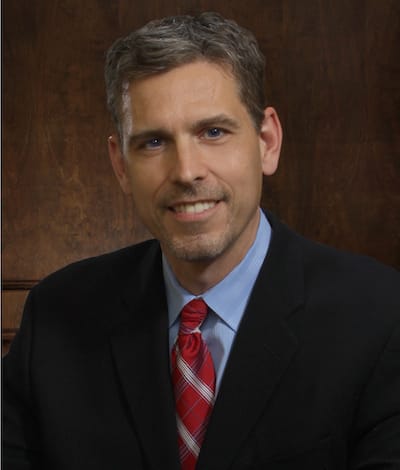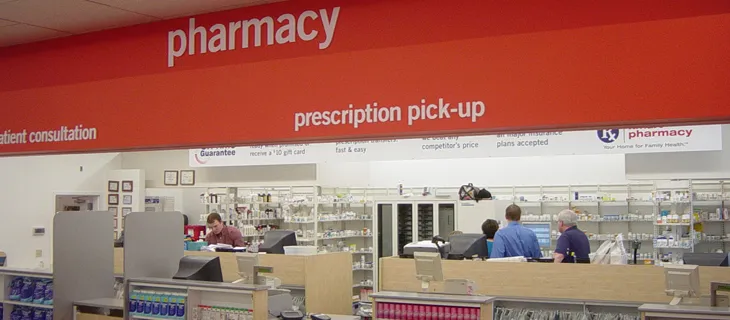
Doug Hoey
Titration. In chemistry, it’s adding a reactant to a solution until a chemical reaction is achieved. The titration process might take numerous drops of reactant before its concentration is high enough to observe a noticeable change. That chemical reaction is an apropos analogy for the current misaligned pharmacy payment model and its pathway to change.
Community pharmacies of all shapes and sizes are in a very challenging time. Thousands of pharmacies — both chain and community pharmacies — have closed their doors, perhaps as many as 5% of retail pharmacies in the last three years. Some pharmacies are scaling back staffing and reducing store hours. Walmart and Harris Teeter pharmacies have had two of the higher-profile reductions in staff or staff hours. Fred’s, Shopko and Rite Aid have closed nearly 1,000 pharmacies in the last two years, and they are not alone. Even the pharmacy Goliaths, Walgreens and CVS Health, have been affected: Their stocks have dropped sharply over the last few years, even while the S&P 500 has been going in the opposite direction.
Yet, the number of prescriptions dispensed in brick-and-mortar pharmacies continues to climb. Also continuing to climb in political polling is voter concern about the affordability of prescription drugs as a top presidential campaign issue.
Back to titration for a moment: I graduated from pharmacy school despite my lack of chemistry proficiency. But I still remember a chemistry class where the professor had a beaker of a clear, colorless solution that he was titrating with a chemical reactant. Drip. Drip. Drip. Drip. His pipette added one drop after another … and nothing happened. More drips. More nothing. Finally, on the 23rd drop of this particular chemical, the liquid began to radically change. It became a deep purple, started to smoke and bubble like a Halloween cauldron. The solution in the beaker was actually changing with every drop, but it wasn’t until that 23rd drop that the change became visible. The 22 drops before were all necessary to cause the reaction to occur.
Like the solution undergoing a chemical reaction, the current pharmacy payment model is slowly changing. It may not be overtly noticeable, but it is changing. That’s good news, because the current pharmacy payment model is in need of reform.
The current pharmacy payment model is cumbersome, confusing, complex and, most of all, covert. It serves no one particularly well except for the middlemen, the PBMs, who have helped create the system that allows them to operate in the shadows. As a result, PBMs are contributing to the higher costs of drugs rather than helping reduce them as the M in PBM is inferred to do. Consumers have little transparency into why their prescriptions cost what they cost, and are frustrated. The current pharmacy payment model is certainly not working well for community pharmacies and chain drug stores.
Fortunately, there are changes being made. Here are a few of the reactants titrating toward a change in the current pharmacy payment model:
• Community Pharmacy Enhanced Services Networks — CPESNs are local pharmacies (chain and community pharmacies are eligible) that have come together to provide and get paid for services that are of value to plan sponsors (employers, government, taxpayers, etc). For example, a plan sponsor that is seeing its health care costs rise because patients without transportation are taking an ambulance to access their health care may be interested in the same-day, personal delivery services that 70% of community pharmacies provide.
So far, over 2,200 pharmacies have formed local networks in their states. The effort is still early, and plan sponsor contracts are being negotiated by the local networks, but already more than 15 contracts have been signed.
Coming together as a CPESN network is especially important for community pharmacies. These pharmacies, supported by the operations of CPESN USA, create a “clinically integrated network.” That is keenly important and allows community pharmacies to negotiate together as providers of high-quality pharmacy services — something they cannot do on the product-dispensing side.
• Elimination of DIR — From their ominous beginnings, the National Community Pharmacists Association has voiced opposition to pharmacy direct and indirect remuneration fees. NCPA’s crusade continues against these retroactive payment adjustments, which make running a business nearly impossible. Not only are these fees bad for the pharmacies, but seniors are pushed into the coverage gap and catastrophic coverage each time they pick up a prescription that has DIR attached to it.
DIR fees have increased 45,000% in just a few short years. That’s a lot of dollars that are being extracted from pharmacies and used to penalize seniors. Stopping pharmacy DIRs is one of the crucial components to help change the pharmacy payment model.
• Quality measures targeting outcomes — Related to eliminating pharmacy DIRs, these are supposed to incent higher patient quality rather than tax pharmacies and seniors. Quality measures that assess actual patient outcomes are crucial to changing the pharmacy payment model. With more granular data now existing and the availability of data increasing, movement toward measuring outcomes is essential to show the value that some pharmacies are providing.
Changing the pharmacy payment model is a huge undertaking, but it is vital to lowering prescription drug costs, empowering pharmacists to practice at the top of their license, enhancing patient care and improving the consumer experience.
Changes, the reactants, are being made to alter the chemistry of the pharmacy payment model. Those changes are slow and even imperceptible at times, but they are happening in an effort to create a payment model that allows innovative pharmacies to thrive and serves health care consumers well.
B. Douglas Hoey is chief executive officer of the National Community Pharmacists Association.









